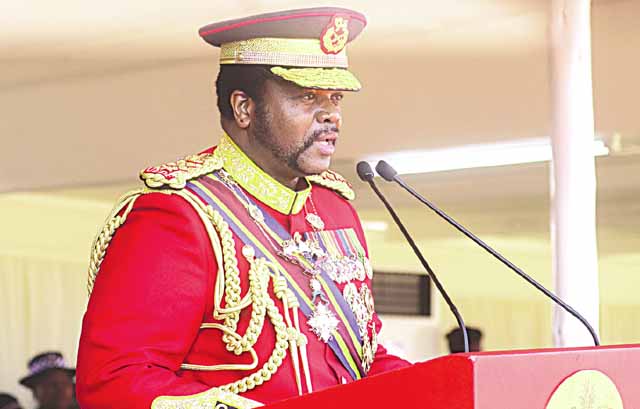By Hlengiwe Ndlovu | 2018-06-13
THE Lilangeni had a mixed value as compared to other major currencies in May, the Central Bank of Swaziland states in its recent economic developments report.
Against the US dollar, the domestic currency weakened by 3.56 per cent to average E12.54 compared to the April. The local unit weakened following the continuous widening of the US treasury yields, which prompted a sell-off of emerging market assets. The Lilangeni further depreciated as the global risk emanating from the trade war between the US and China subsided with the two major economies agreeing to stop imposing tariffs on each other.
On the contrary, the Lilangeni was stronger at E16.87 against the Pound sterling in May, up from E17.05 recorded in April 2018. The Central Bank attributes this strengthening to the news that annual inflation in the United Kingdom had slowed to a one-year low in May, which minimises the prospect of rate hike by the Bank of England. Similarly, the local unit strengthened by 0.3 per cent against the Euro to trade at E14.82 as Euro zone economic data failed to pick up. In the meantime, the Central Bank attributed the drastic increase in inflation from 4 per cent to 4.8 per cent to an increase in the price index for ‘Housing and Utilities’, which increased from 8.1 per cent in March 2018 to 13.3 per cent in April 2018. This was mainly due to a 15 per cent year-on-year increase in the prices for ‘actual rentals’. Increased electricity tariffs which increased by 15 per cent in April as part of the two-year- multi-tariff structure approved by the Swaziland Energy Regulatory Authority (SERA) in 2017 also resulted in inflationary pressures. Further increases came from the price index for ‘furnishing and household equipment’ which grew by 0.9 of a percentage point to 3.9 per cent in April. The furnishings and household increases were partially offset by slight decreases noted in the price indices for ‘food and non-alcoholic beverages’ and ‘transport’. In the meantime, food inflation maintained a downward trend, recording a deflation of 0.9 per cent in April 2018 from an increase of 0.9 per cent in March 2018. The continuous deceleration in food inflation mainly resulted from decreases in the prices for ‘rice, cereals and pasta products’, ‘oils and fats’ and ‘sugar products’ as well as slower increases in the prices of ‘meat’ and ‘vegetables’. On the other hand, transport inflation slowed to 3.3 per cent in April 2018 from 3.9 per cent the previous month. The decrease mainly benefited from slower increases in the purchasing prices for motor vehicles with a petrol engine.
On month-on-month basis, consumer price inflation accelerated by 3.6 per cent in April from 0.0 per cent recorded in March.
share story
Post Your Comments Below

There is hope for better lives as His Majesty King Mswati promised jobs to Emaswati.
He note...

Soccer- Royal Leopard head coach Edwin Matsebula says if they drop points in their MTN Premier Le...

His Majesty King Maswati III has thanked Emaswati for their support, love and the gift of peace. ...
All material © Swazi Observer. Material may not be published or reproduced in any form without prior written permission.
Design by Real Image Internet